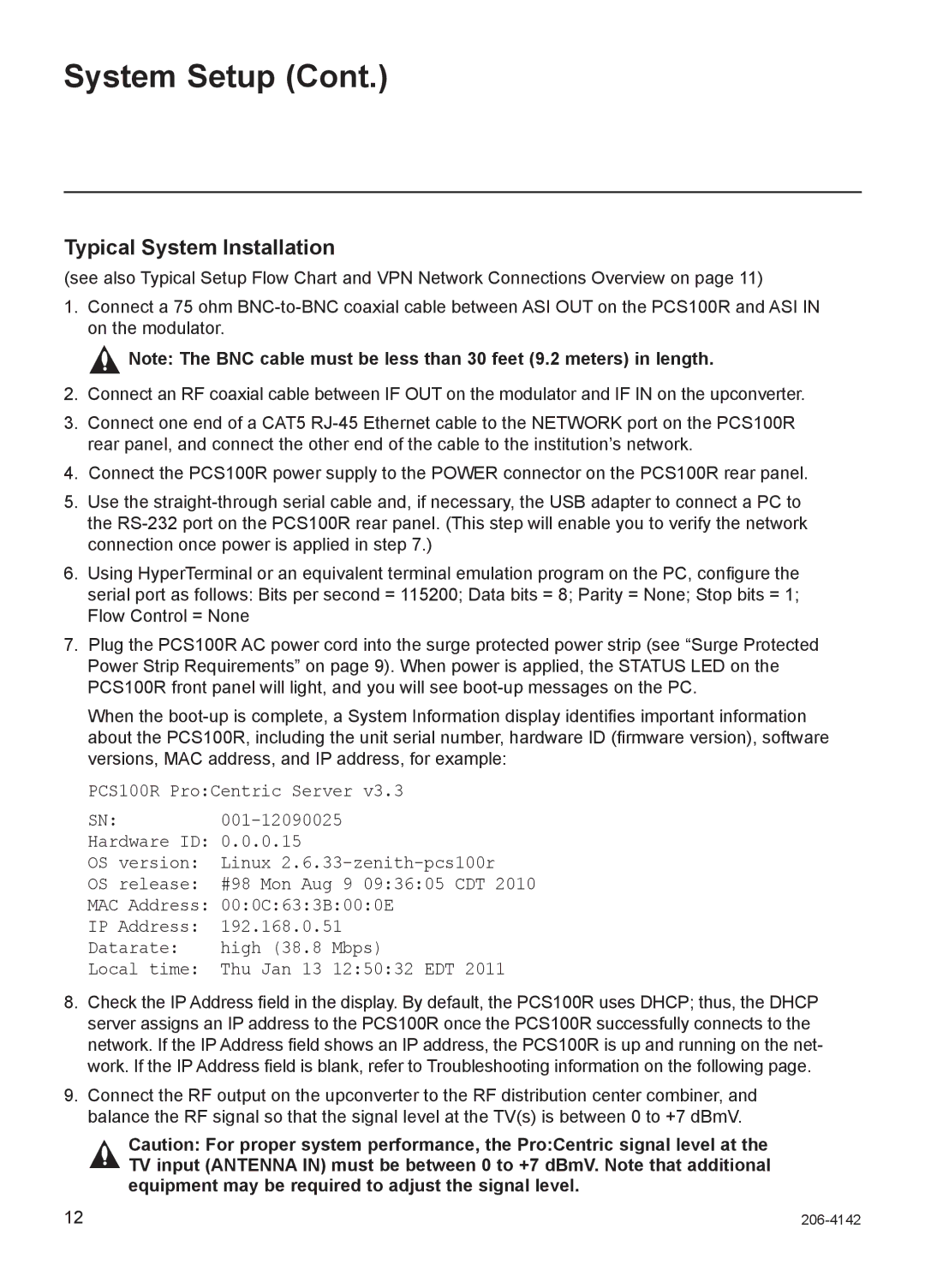
System Setup (Cont.)
Typical System Installation
(see also Typical Setup Flow Chart and VPN Network Connections Overview on page 11)
1.Connect a 75 ohm
![]() Note: The BNC cable must be less than 30 feet (9.2 meters) in length.
Note: The BNC cable must be less than 30 feet (9.2 meters) in length.
2.Connect an RF coaxial cable between IF OUT on the modulator and IF IN on the upconverter.
3.Connect one end of a CAT5
4.Connect the PCS100R power supply to the POWER connector on the PCS100R rear panel.
5.Use the
6.Using HyperTerminal or an equivalent terminal emulation program on the PC, configure the serial port as follows: Bits per second = 115200; Data bits = 8; Parity = None; Stop bits = 1; Flow Control = None
7.Plug the PCS100R AC power cord into the surge protected power strip (see “Surge Protected Power Strip Requirements” on page 9). When power is applied, the STATUS LED on the PCS100R front panel will light, and you will see
When the
PCS100R Pro:Centric Server v3.3
SN:
Hardware ID: 0.0.0.15
OS version: Linux
OS release: #98 Mon Aug 9 09:36:05 CDT 2010
MAC Address: 00:0C:63:3B:00:0E
IP Address: 192.168.0.51
Datarate: high (38.8 Mbps)
Local time: Thu Jan 13 12:50:32 EDT 2011
8.Check the IP Address field in the display. By default, the PCS100R uses DHCP; thus, the DHCP server assigns an IP address to the PCS100R once the PCS100R successfully connects to the network. If the IP Address field shows an IP address, the PCS100R is up and running on the net- work. If the IP Address field is blank, refer to Troubleshooting information on the following page.
9.Connect the RF output on the upconverter to the RF distribution center combiner, and balance the RF signal so that the signal level at the TV(s) is between 0 to +7 dBmV.
Caution: For proper system performance, the Pro:Centric signal level at the TV input (ANTENNA IN) must be between 0 to +7 dBmV. Note that additional equipment may be required to adjust the signal level.
12 |
